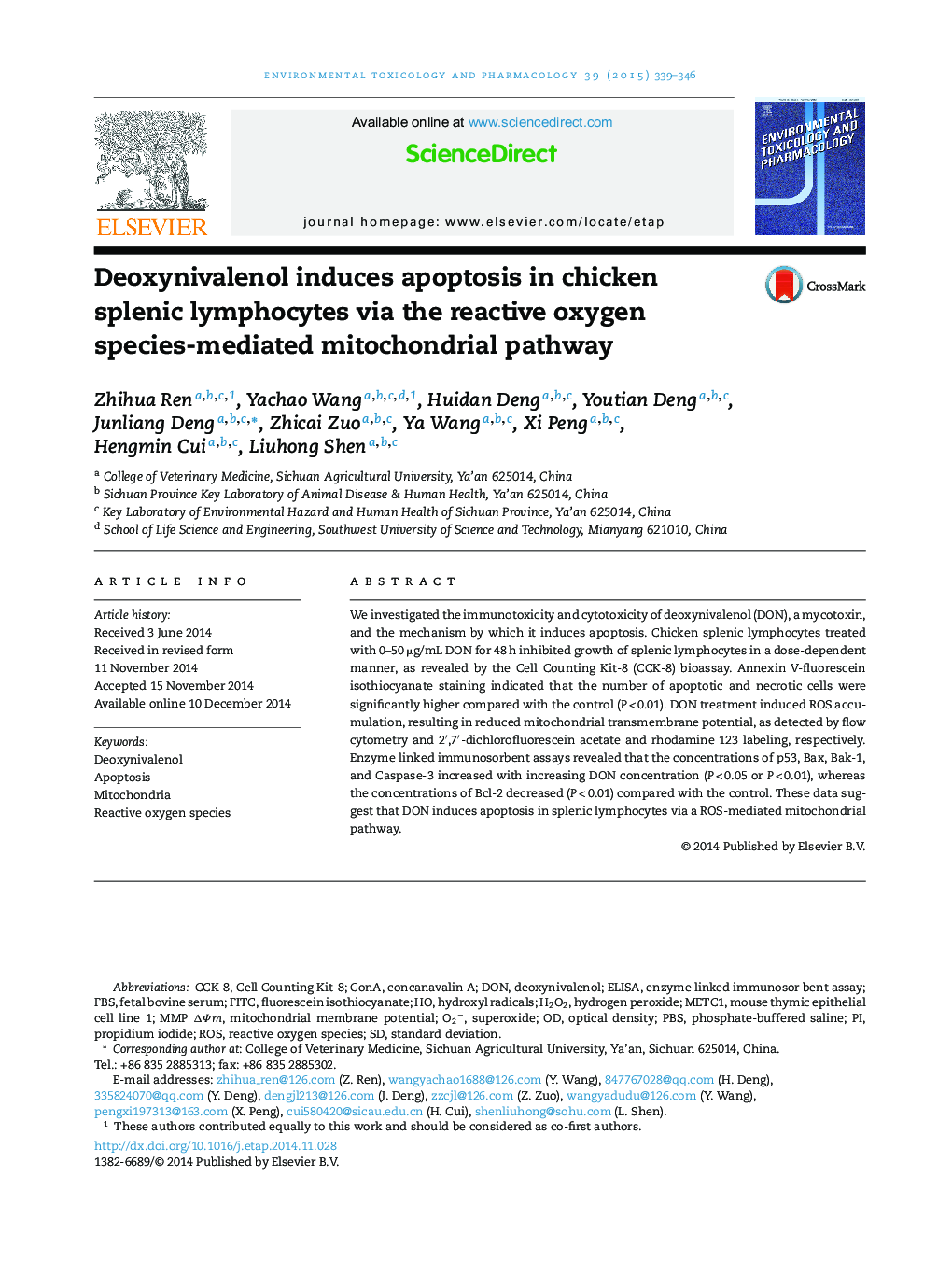| Article ID | Journal | Published Year | Pages | File Type |
|---|---|---|---|---|
| 2583294 | Environmental Toxicology and Pharmacology | 2015 | 8 Pages |
•DON inhibited the growth of splenic lymphocytes in a dose-dependent manner.•Cytotoxicity was assessed with the CCK-8 bioassay.•DON treatment induced ROS accumulation in splenic lymphocytes.•Apoptosis was correlated with inappropriate of p53, Bax, Bak-1, Bcl-2, and caspase-3 concentrations.•Apoptosis was correlated with disordered of p53, Bax, Bak-1, Bcl-2, and caspase-3 expression.
We investigated the immunotoxicity and cytotoxicity of deoxynivalenol (DON), a mycotoxin, and the mechanism by which it induces apoptosis. Chicken splenic lymphocytes treated with 0–50 μg/mL DON for 48 h inhibited growth of splenic lymphocytes in a dose-dependent manner, as revealed by the Cell Counting Kit-8 (CCK-8) bioassay. Annexin V-fluorescein isothiocyanate staining indicated that the number of apoptotic and necrotic cells were significantly higher compared with the control (P < 0.01). DON treatment induced ROS accumulation, resulting in reduced mitochondrial transmembrane potential, as detected by flow cytometry and 2′,7′-dichlorofluorescein acetate and rhodamine 123 labeling, respectively. Enzyme linked immunosorbent assays revealed that the concentrations of p53, Bax, Bak-1, and Caspase-3 increased with increasing DON concentration (P < 0.05 or P < 0.01), whereas the concentrations of Bcl-2 decreased (P < 0.01) compared with the control. These data suggest that DON induces apoptosis in splenic lymphocytes via a ROS-mediated mitochondrial pathway.
